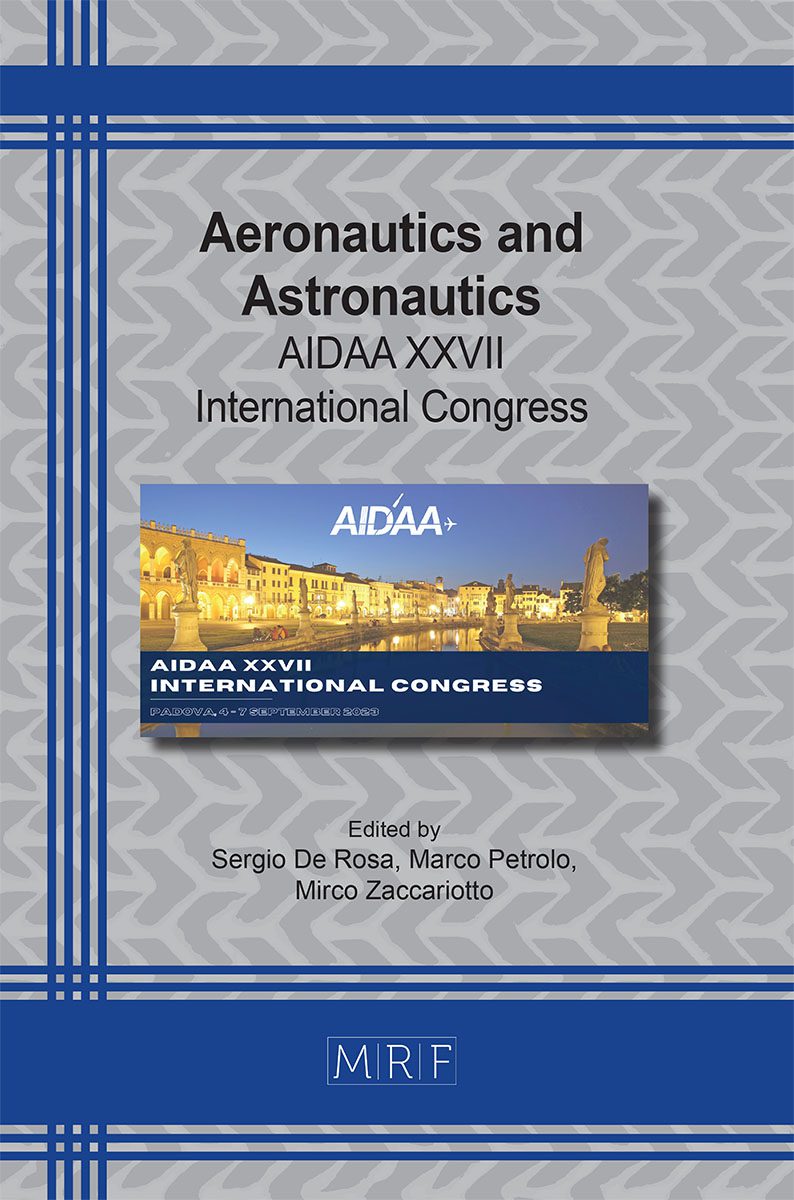Large Eddy simulations and Reynolds-averaged Navier-Stokes simulations of separation-induced transition using an unstructured finite volume solver
Manuel Carreño Ruiz, Domenic D’Ambrosio
download PDFAbstract. The study aims to assess the capability of different methodologies in capturing the separation-induced transition phenomenon. This transition mechanism occurs when the flow separates from the airfoil surface, and transitions from a laminar to a turbulent state due to the amplification of the Kelvin-Helmholtz instability developed in the separated shear layer. The simulations employ high-order numerical methods for solving the Navier-Stokes equations, while the transition modeling for RANS is based on the γ-Re_θ transition model. LES enables prediction of the onset and location of transition and provides turbulent flow statistics.
Keywords
Laminar Separation Bubbles (LSB), Large Eddy Simulation (LES), Transition Modelling, Reynolds Averaged Navier Stokes (RANS)
Published online 11/1/2023, 4 pages
Copyright © 2023 by the author(s)
Published under license by Materials Research Forum LLC., Millersville PA, USA
Citation: Manuel Carreño Ruiz, Domenic D’Ambrosio, Large Eddy simulations and Reynolds-averaged Navier-Stokes simulations of separation-induced transition using an unstructured finite volume solver, Materials Research Proceedings, Vol. 37, pp 189-192, 2023
DOI: https://doi.org/10.21741/9781644902813-41
The article was published as article 41 of the book Aeronautics and Astronautics
![]() Content from this work may be used under the terms of the Creative Commons Attribution 3.0 license. Any further distribution of this work must maintain attribution to the author(s) and the title of the work, journal citation and DOI.
Content from this work may be used under the terms of the Creative Commons Attribution 3.0 license. Any further distribution of this work must maintain attribution to the author(s) and the title of the work, journal citation and DOI.
References
[1] Galbraith, M., & Visbal, M, Implicit large eddy simulation of low-Reynolds-number transitional flow past the SD7003 airfoil. In 40th fluid dynamics conference and exhibit (2010) AIAA-4737. https://doi.org/10.2514/6.2010-4737
[2] Uranga, A., Persson, P. O., Drela, M., & Peraire, J. Implicit large eddy simulation of transitional flows over airfoils and wings. In 19th AIAA Computational Fluid Dynamics (2009) AIAA- 4131. https://doi.org/10.2514/6.2009-4131
[3] Catalano, P., & Tognaccini, R. Large eddy simulations of the flow around the SD7003 airfoil. In AIMETA Conference (2011) pp. 1-10.
[4] Windte, J., Scholz, U., and Radespiel, R., “Validation of RANS Simulation of Laminar Separation Bubbles on Airfoils,” Aerospace Science and Technology Journal, Vol. 10, No. 7, 2006, pp. 484–494. https://doi.org/10.1016/j.ast.2006.03.008
[5] Catalano, P. and Tognaccini, R., “Turbulence Modelling for Low Reynolds Number Flows,” AIAA Journal, Vol. 48, No. 8, 2010, pp. 1673–1685. https://doi.org/10.2514/1.J050067
[6] Catalano, P. and Tognaccini, R., “RANS analysis of the low-Reynolds number flow around the SD7003 airfoil,” Aerospace Science and Technology Journal, 2011. https://doi.org/10.1016/j.ast.2010.12.006
[7] De Santis, C., Catalano, P., & Tognaccini, R. (2022). Model for enhancing turbulent production in laminar separation bubbles. AIAA Journal, 60(1), 473-487. https://doi.org/10.2514/1.J060883
[8] Menter, F. R., Smirnov, P. E., Liu, T., & Avancha, R. (2015). A one-equation local correlation-based transition model. Flow, Turbulence and Combustion, 95, 583-619. https://doi.org/10.1007/s10494-015-9622-4
[9] Carreño Ruiz, M., D’Ambrosio, D. Validation of the γ-Re θ Transition Model for Airfoils Operating in the Very Low Reynolds Number Regime. Flow Turbulence Combust 109, 279–308 (2022). https://doi.org/10.1007/s10494-022-00331-z
[10] Langtry, R. B., & Menter, F. R. (2009). Correlation-based transition modeling for unstructured parallelized computational fluid dynamics codes. AIAA journal, 47(12), 2894-2906. https://doi.org/10.2514/1.42362
[11] Ricci, F. & Strobel, P. & Tsoutsanis, P. & Antoniadis, A. Hovering rotor solutions by high-order methods on unstructured grids. Aerospace Science and Technology. (2019). https://doi.org/10.1016/j.ast.2019.105648












